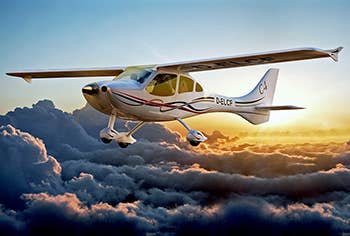
We're mere weeks away from seeing the FAA's first take on revised small aircraft certification standards, what has come to be known as the Part 23 rewrite. FAA Administrator Michael Huerta said the notice of proposed rulemaking should be published before the end of the year, a time table he's hopeful the agency can meet as preparations are made for sweeping changes in the way the FAA certifies light general aviation airplanes.
Make no mistake, this is a big deal. It will free designers from the shackles of decades-old certification requirements, permitting them to create airplanes that would be impossible to bring to the market under the current rules, and do it for less money.
The big question is, how much latitude will the FAA really give manufacturers? I'm increasingly hopeful that the answer will be "a lot."
"We want to increase safety, we want to certify more efficiently, and help industry reach the market with innovative technologies and innovative products," Huerta recently told flight school owners at Redbird Migration in San Marcos, Texas. "In the past we regulated the design of the product. In the future we will define the safety parameters with which we wish to achieve, leaving the industry free to approach product design to the best of their abilities."
Rather than describing the exact technical details of how an airplane must be built, the new rules will lay out the performance standards that it needs to meet. It will be left to the manufacturer to determine how best to meet them. Not only will this make future light airplanes safer, they will cost less to certify and less to purchase.
In theory, improving safety will lead to reduced product liability costs, also helping to bring down costs. Some manufacturers believe the price of a new four-seat general aviation airplane could drop to around $250,000 from the $400,000 a new Cessna Skyhawk or Piper Archer sells for today.
While I understand that a quarter million dollars is probably still too high for the average would-be consumer, it will be an enticing price for a certain tier of pilot, especially if the $250,000 airplane is miles ahead of the $400,000 airplane in technological sophistication and performance.
The Part 23 rewrite won't be a silver bullet that will magically solve all of GA's woes, but it will be a positive first step in a hoped-for rejuvenation as flight schools, flying clubs and individual pilots can start making plans to upgrade to modern airplanes with 21st capabilities and let some of those older airplanes from the 1950s and 1960s enjoy a well deserved retirement.

Sign-up for newsletters & special offers!
Get the latest FLYING stories & special offers delivered directly to your inbox






